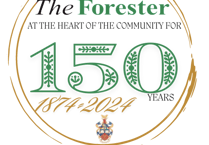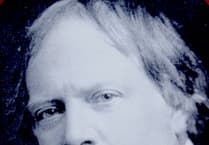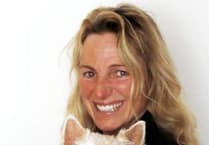The word ‘Borderlands’ is often used to describe a mysterious, remote, and possibly lawless area beyond the control of national government. Mike Parker, in his newly published book ‘All the Wide Border’ (sub titled ‘Wales, England and the Places in between’) looks at the political and cultural history where Wales and the Borderlands meet.
‘All the Wide Border’ is a meditation on the boundary between England and Wales from the point of view of an Englishman who has lived in Wales for 25 years and gives a staunchly Welsh interpretation of the collision between cultures, and its linguistic and political implications.
The River Wye has become the border between England and Wales in the south, between Gloucestershire and Gwent up to Redbrook, where the boundary moves across to the eastern side to include the Kymin hill before moving back to the River Wye at Ganerew. North of Monmouth, the boundary weaves around and over rivers and mountains. The English borderlands have their Welsh influence. In Herefordshire there are Welsh place names in remote areas, including Welsh Newton, Welsh Bicknor, Llangarron, Llangrove and Maes Coed attesting to the Welsh influence and occupation of these frontier areas. And further north, in Shropshire there are the Welsh place names Trefonen and Maesbury. But even Gloucestershire has its Welsh place names, including Lancaut and Welshbury Hill, and in Gloucester there is Llantony Secunda, the safe retreat for monks who were driven out of the original Llantony priory after a disagreement with the local people. If you walk the great Offa’s Dyke footpath from Beachley to Prestatyn in north Wales you will find beneath you as you walk along Hatterall Hill, the original Llantony priory.
Newport Rugby Club was the home of many Welsh international players and won a famous victory against the otherwise unbeaten mighty All Black touring team in 1963. Newport was then in Monmouthshire, which was at the time deemed to be in England, but this outrageous anomaly was later rectified when Wales reclaimed Monmouthshire, renaming it with its ancient Welsh name - Gwent.
In the 1970s I worked for the Welsh Joint Education Committee, where I noted that there were candidates for Welsh language examinations in Shropshire and Hereford schools, keeping the cross border links alive.
I suppose that some foresters of a certain age will remember the old days when pubs in Wales were closed on Sundays, and so the pubs on the English side of the national boundary would flourish that day with visits from people from the other side of Offa’s Dyke.
My wife and I walked the Offa’s Dyke path in 1990 in 12 days, crossing the border about 23 times, and having to ask at each evening stop which country we were in. The track is 160 miles from Beachley to Prestatyn, 100 miles as the crow flies, but not being crows we took the advertised route. Hatterall Hill and the Clwydian Hills were the most challenging part of the track, but there were also some pleasant river paths in central Wales.
These thoughts are presented in an anecdotal and non-political way, but Mike Parker’s penetrating, comprehensive and subversive study of national identity and the tension between unequal neighbours is amusingly and powerfully described, and seems to be presenting an elegant case for re-setting the status of Wales in the island of Great Britain.





Comments
This article has no comments yet. Be the first to leave a comment.